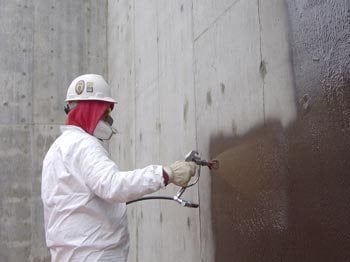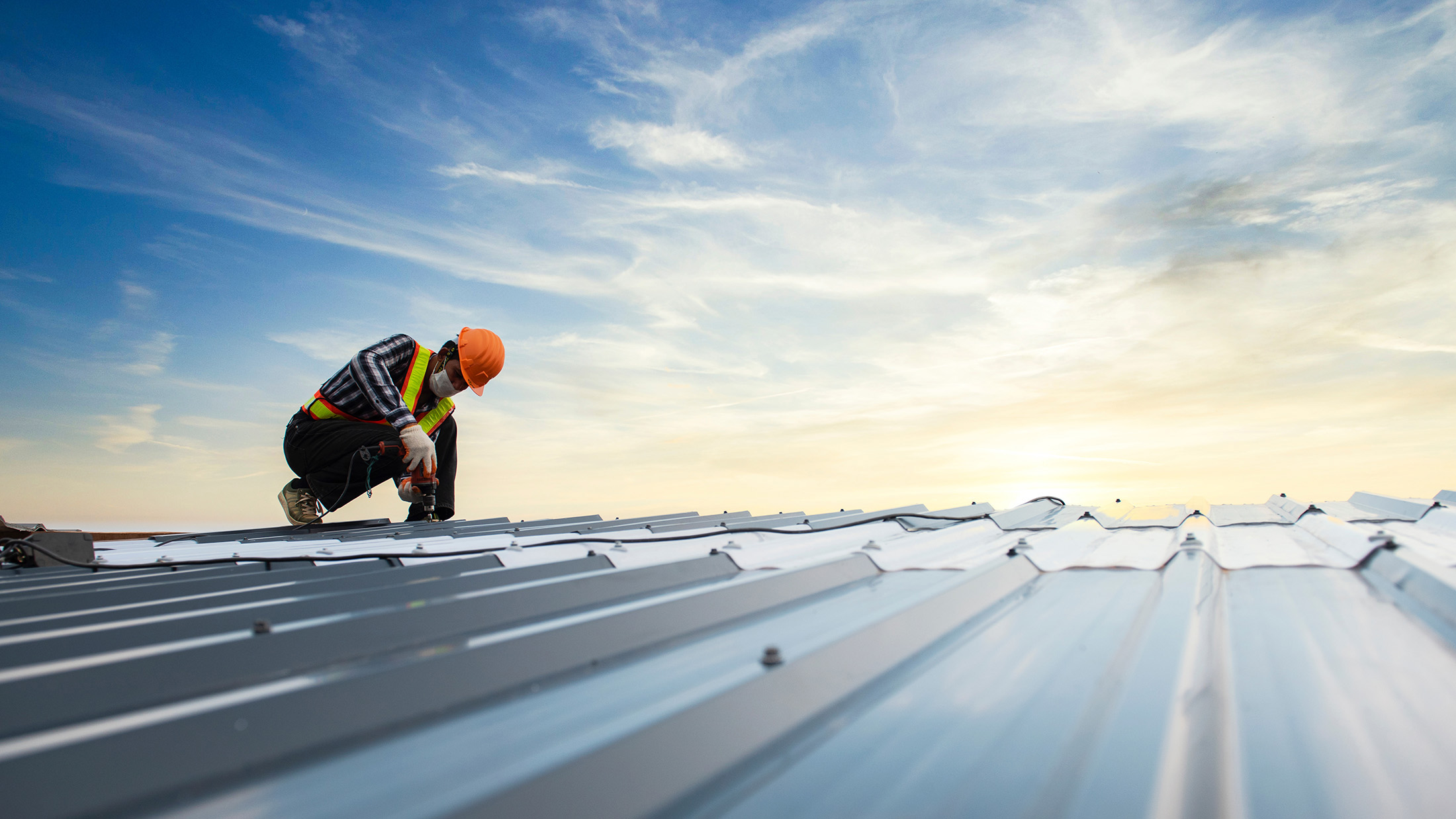French drain installation Omaha Explained: FAQs Answered
Wiki Article
Exactly How Waterproofing Works: A Comprehensive Check Out Strategies and Technologies
Waterproofing is important for protecting frameworks from moisture-related damage. It includes various strategies and modern technologies that create obstacles versus water breach. Traditional methods, such as compacted clay, coexist with modern developments like liquid-applied membrane layers. Comprehending the subtleties of these techniques is vital for reliable application. Nevertheless, the effectiveness of any kind of waterproofing solution hinges not only on the strategies used but also on continuous maintenance and assessment. What are the key aspects that affect long-term performance?Recognizing the Basics of Waterproofing
Waterproofing is an important process that protects frameworks from water breach, which can lead to significant damages with time. This approach entails the application of numerous products and methods made to create a barrier against dampness. The primary objective is to protect against water from passing through surface areas, which can cause deterioration, mold and mildew growth, and architectural instability.Various factors affect the selection of waterproofing approach, consisting of the sort of structure, its place, and environmental conditions. Recognizing the physics of water motion and the residential properties of different products is essential in picking an effective waterproofing solution.Effective waterproofing not only safeguards buildings but also improves their long life and honesty. Generally, it is incorporated into the layout stage of building and construction to assure detailed defense. As awareness of water-related concerns grows, the significance of recognizing waterproofing fundamentals ends up being significantly clear to architects, building contractors, and residential property proprietors alike.Traditional Waterproofing Techniques
Standard waterproofing techniques have been used for centuries, depending on tried and true strategies and materials to protect structures from water damages. Among the earliest methods involves the use of clay, which, when compressed, creates a natural obstacle against wetness. In addition, bitumen, a sticky, black product originated from oil, has been utilized for its water-resistant properties, commonly used to roof coverings and foundations.Another method involves the application of lime-based plasters, which supply a breathable layer that enables moisture to escape while protecting against water access. Thatch roof, a standard approach still seen in some societies, uses outstanding waterproofing because of its tightly loaded straw layers.Moreover, making use of rock and block has actually projected, as these products are naturally immune to water when appropriately mounted. Overall, conventional waterproofing techniques stress the value of choosing suitable materials and building and construction techniques to enhance durability versus water breach.Modern Waterproofing Technologies
Improvements in modern waterproofing innovations have actually changed the method structures are secured from water damages. Cutting-edge techniques such as liquid-applied membrane layers and advanced sealants have actually boosted the efficiency and versatility of waterproofing solutions. These technologies enable smooth application, minimizing the threat of leaks and making certain complete coverage over complex surfaces.Moreover, the combination of clever modern technologies, such as wetness sensing units and automated surveillance systems, allows real-time assessment of waterproofing efficiency. This positive method helps with prompt maintenance and decreases long-lasting repair service costs.Additionally, developments in spray-applied finishings offer quick application and excellent adhesion, adapting to numerous substratums while providing durable protection. Strategies like polymer-modified systems further improve versatility and sturdiness, making them ideal for diverse atmospheres. Overall, contemporary waterproofing innovations not only minimize water invasion but additionally contribute to the longevity and sustainability of structures, noting a considerable change in the industry.Products Used in Waterproofing
The efficiency of waterproofing options greatly depends on the materials made use of in their application. Different products are utilized to produce obstacles versus water access, each with unique homes suited for different atmospheres. Typically used products consist of membrane layers, finishes, and sealants.Liquid-applied membranes, usually made from polyurethane or acrylic, create a seamless obstacle that adjusts to intricate surfaces. Sheet membranes, commonly constructed from rubber or thermoplastic, deal resilience and are optimal for larger locations. Furthermore, cementitious waterproofing products, composed of cementitious substances, supply excellent bond and flexibility.Sealants made from silicone or polyurethane are vital for joints and seams, guaranteeing detailed defense. Resources Furthermore, innovative materials, such as geo-composite membranes, integrate multiple functions, enhancing performance. In general, the choice of waterproofing materials is important in achieving resilient and efficient water resistance, customized to particular task needs and ecological problems.
Usual Applications of Waterproofing
Waterproofing plays an important duty in various fields, making sure the durability and stability of frameworks. Usual applications consist of household remedies that shield homes, industrial facilities that safeguards companies, and industrial settings that call for robust security against dampness. Comprehending these applications highlights the importance of waterproofing in preserving both safety and security and capability across different atmospheres.Residential Waterproofing Solutions
Several home owners deal with obstacles with dampness breach, making effective domestic waterproofing services essential. Various techniques exist to address this issue, including exterior and interior waterproofing systems. Inside remedies often involve the application of sealers and finishings to basement wall surfaces, which help stop water seepage. Exterior techniques normally consist of the installment of drain systems and water-proof membranes that divert water away from the foundation.Additionally, home owners may think about sump pumps to eliminate water buildup and dehumidifiers to control humidity degrees. Correct grading and using seamless gutters additionally play a vital duty in managing water circulation around the home. By implementing these approaches, property owners can significantly reduce the threat of water damage and mold and mildew development, ensuring a dry and risk-free living environment.
Industrial Facilities Security
Reliable waterproofing services play a critical function in the defense of industrial infrastructure. Water Solutions. These techniques are crucial for guarding buildings, vehicle parking frameworks, and bridges from water damage, which can jeopardize architectural integrity and result in costly fixings. Typical applications include the installment of membranes, coverings, and sealers that develop obstacles against dampness seepage. Locations such as basements, roofs, and outside wall surfaces are typically prioritized to ensure longevity and resilience. Additionally, waterproofing systems can improve power effectiveness by protecting against water-related concerns that may lead to mold and mildew development and deterioration. By applying robust waterproofing actions, residential or commercial property owners can secure their investments and maintain operational efficiency, ultimately adding to the general sustainability of industrial centersIndustrial Applications Overview
While various industries deal with special obstacles, the need for trusted waterproofing options remains a consistent in commercial applications. Industries such as production, construction, and power commonly run into atmospheres where moisture direct exposure can threaten structural integrity and functional efficiency. In manufacturing centers, waterproofing is critical for securing machinery and materials from water damage. In building, it safeguards structures and cellars against groundwater infiltration. The energy field relies upon waterproofing for the defense of equipment in hydroelectric plants and overseas frameworks. In addition, food processing markets use waterproofing to assure health and compliance with safety and security requirements. On the whole, efficient waterproofing services are vital for improving toughness, safety and security, and performance across various commercial setups.
Maintenance and Durability of Waterproofing Solutions
Although waterproofing services are made to offer long-lasting security against moisture breach, routine upkeep is necessary to ensure their efficiency and long life - Water Solutions Omaha. Routine evaluations play a substantial function in recognizing prospective concerns such as fractures, peeling, or signs of water damage. Dealing with these troubles quickly can prevent more damage and costly repairs.Additionally, cleaning the surface of waterproofed areas aids remove dirt and particles that could endanger the honesty of the waterproofing obstacle. It's additionally suggested to reapply safety finishes or sealers as suggested by producers explanation to preserve perfect performance. Ecological factors, such as UV exposure and extreme weather condition problems, can affect the lifespan of check this site out waterproofing products, making normal analysis importantRegularly Asked Inquiries
Can Waterproofing Be Applied in Cold Climate?
The question of applying waterproofing in cold climate increases worries about attachment and treating. Numerous items might not carry out at their ideal in low temperature levels, necessitating mindful choice and factor to consider of specific standards for efficient application.Exactly How Long Does Waterproofing Generally Last?
The period of waterproofing efficiency differs based on products and ecological elements. Generally, it can last from 5 to 10 years, but regular maintenance and inspections are vital to ensure peak efficiency and longevity.Is DIY Waterproofing Effective and Safe?
The efficiency and safety of do it yourself waterproofing rely on numerous aspects, consisting of worldly quality and application method. While some people attain satisfactory outcomes, others may experience concerns that compromise lasting security and architectural integrity.What Are the Indications of Failing Waterproofing?
Signs of failing waterproofing consist of noticeable water stains, peeling paint, mold growth, musty odors, and wetness in walls or ceilings - Water Solutions. These indicators suggest compromised barriers, requiring prompt assessment and potential remediation to protect against additional damagesJust how Do I Pick the Right Waterproofing Professional?

Report this wiki page